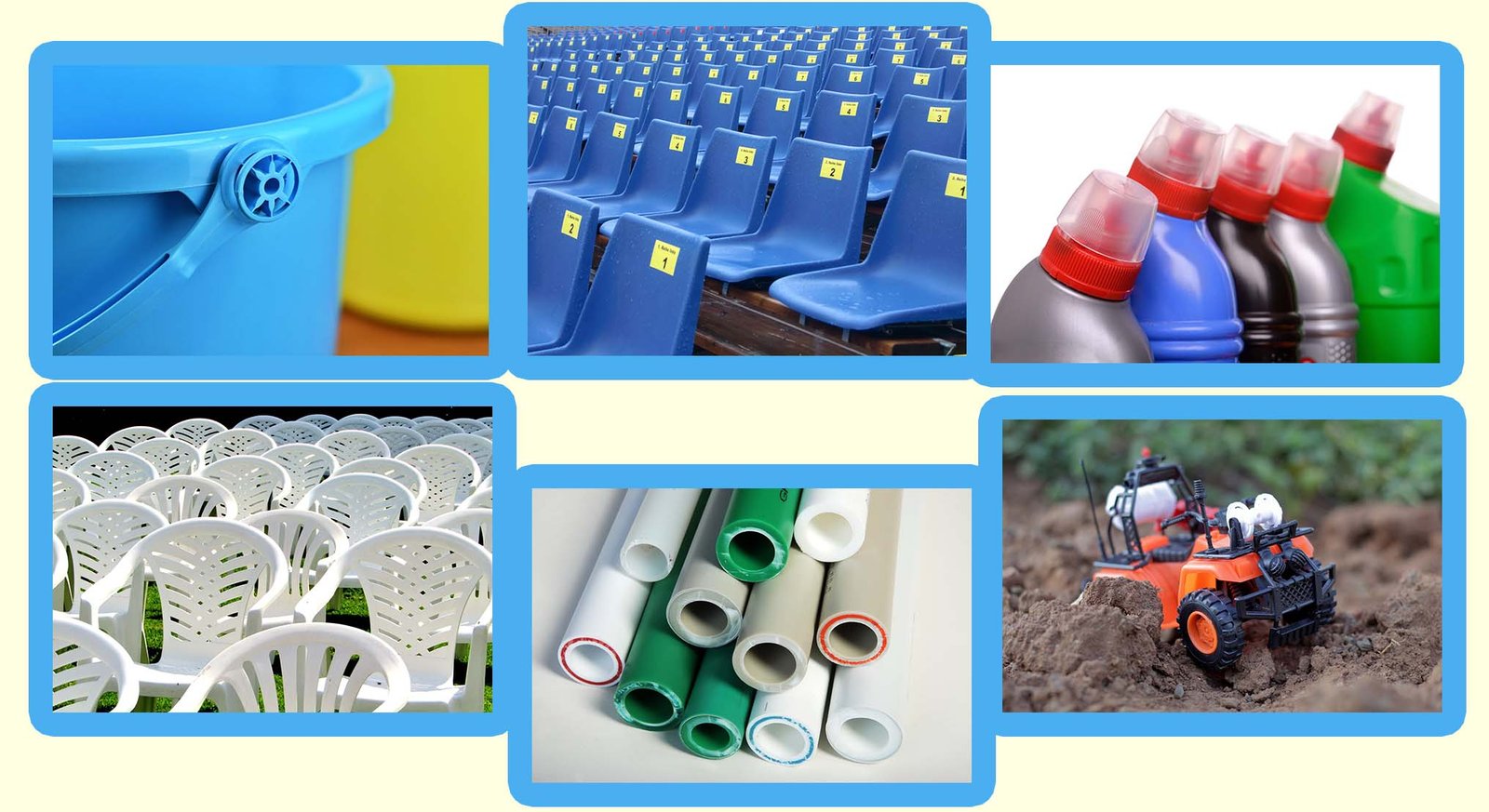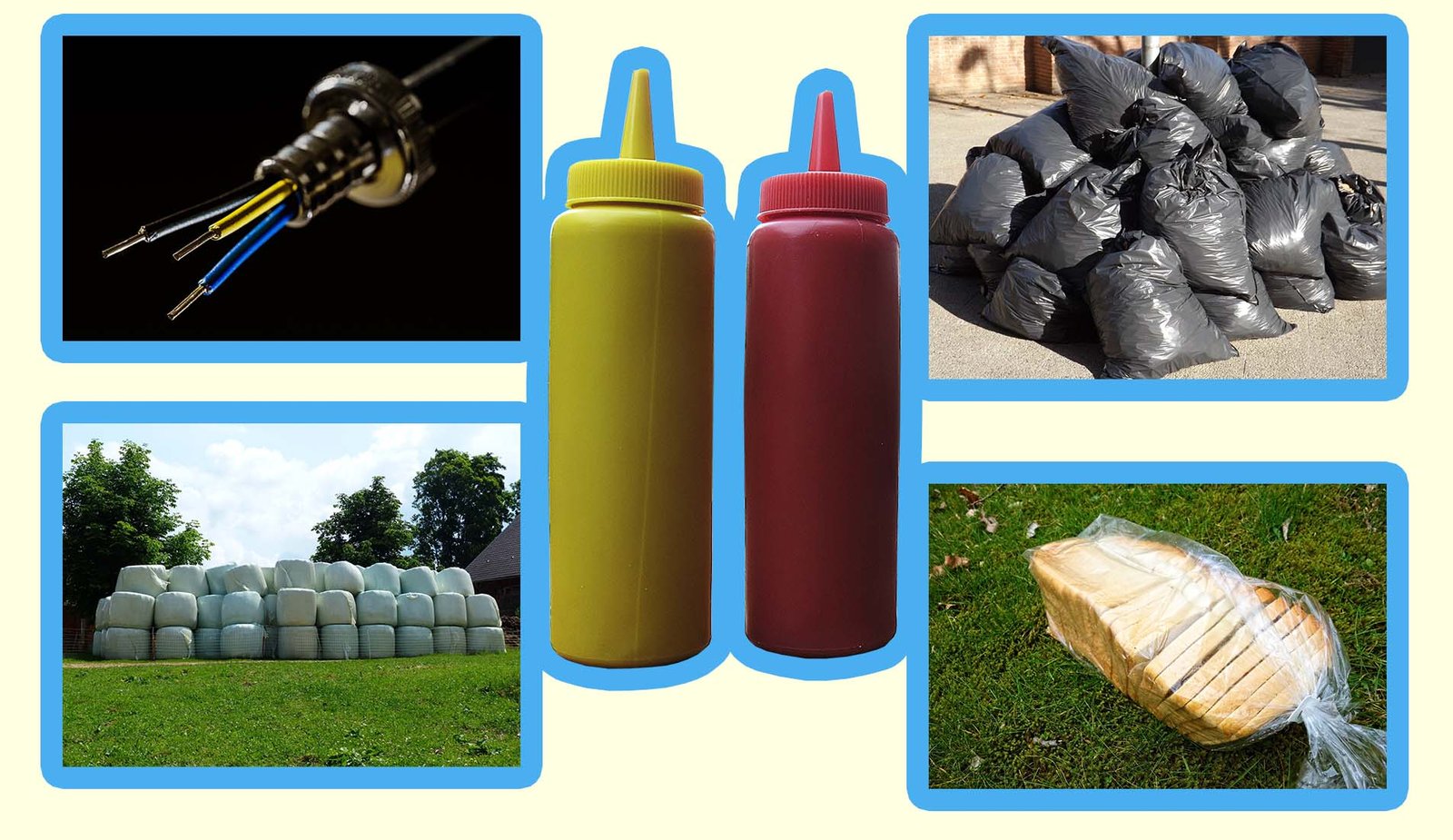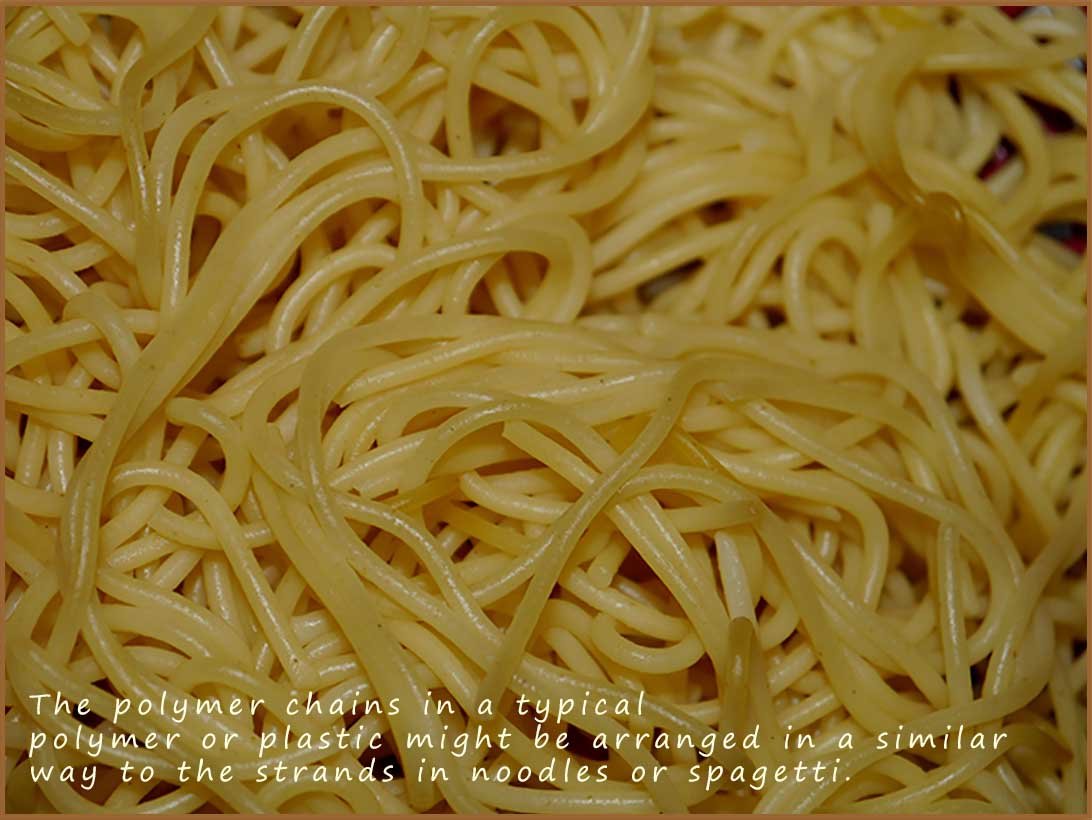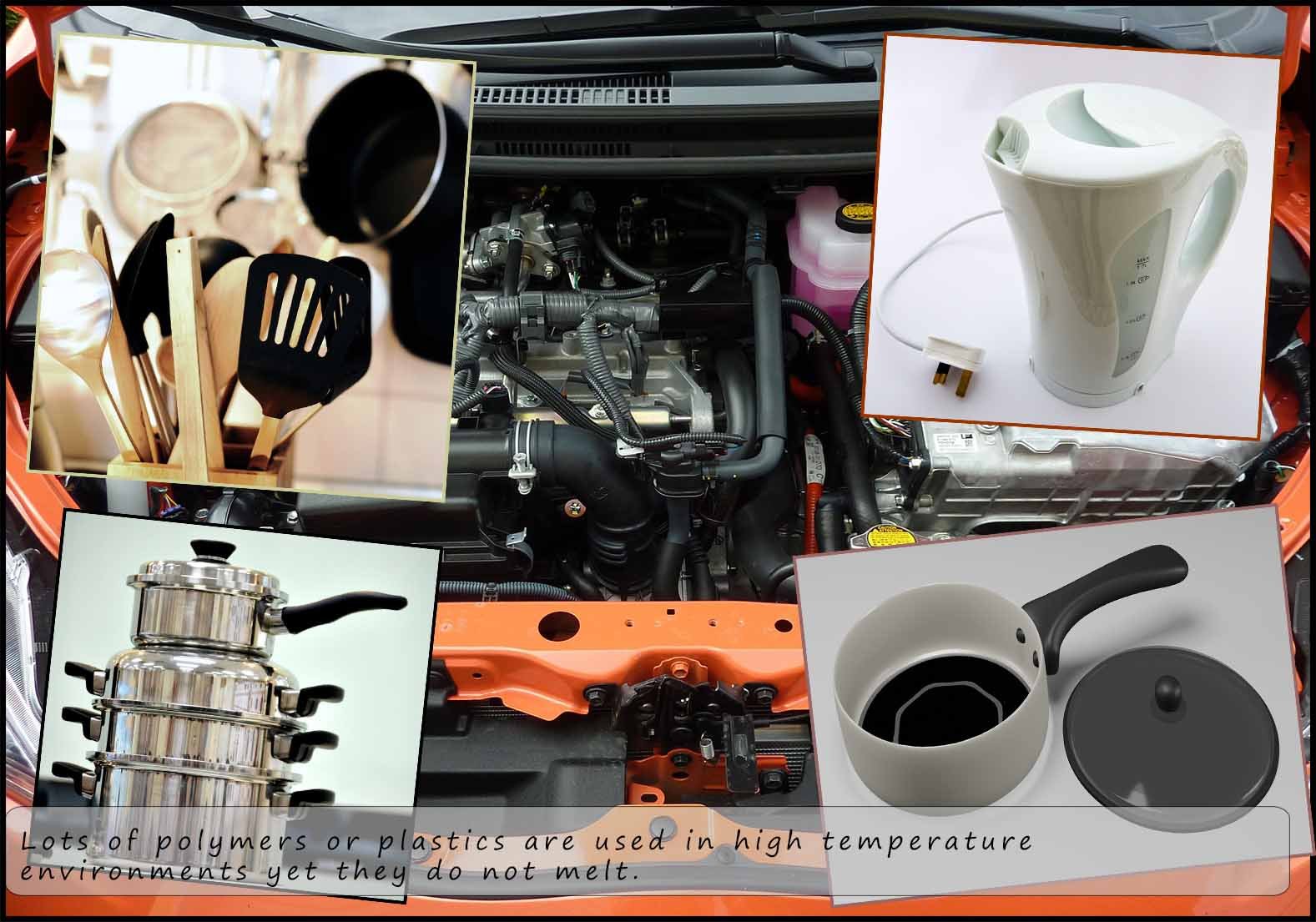

Chemistry only
To get the most from this page you should have a good idea of what monomers, polymers and addition polymerisation is, if you need to quickly revise these terms then click the link- addition polymers.
There are two types of polythene in common use; high density polythene (HDPE) and low density polythene (LDPE). Both of these types of poly(ethene) or polythene are made from the same monomer; ethene. However the differences in the chemical and physical properties of these two types of polythene is down to the way in which they are made.

The long polythene chains which make up HDPE are very linear and regular in shape with only a few side chains or branches present; this allows the long polymer chains to pack closely together which results in a dense polymer. The close packing of the polymer chains also allows for more intermolecular bonding to occur between adjacent polymer chains which results in an increase in the strength of the polymer. HDPE has many uses; this is mainly due to its many useful and valuable properties which include:
However HDPE has numerous drawbacks: it is not biodegradable, it is flammable and it is made from a monomer obtained from crude oil; which is of course a finite resource.
low density poly(ethene) like HDPE is made from the monomer ethene, but it has different properties from HPDE due to the way in which LDPE is made. In HDPE the long polymer chains were linear with only a few bracnches however in LDPE the long polymer chains have many side branches present; these bracnches and side chains prevent adjacent polymer chains in the LDPE from packing together closely which results in a low density polymer, as shown in the image below. Since the polymer chains cannot pack together well there is a reduction in the strength of the intermolecular bonding present which reduces the overall strength of the polymer.
The collage below shows a few items which are made from LDPE.

Low density polythene is used to make a wide variety of items including:
| Manufacturing conditions | LDPE | HDPE |
|---|---|---|
| pressure (atmospheres) | 1000-3000 | 10-80 |
| temperature (/0C) | 150-300 | 70-150 |
| catalyst | Uses an initiator such as oxygen or a peroxide to start the reaction. | Ziegler-Natta catalyst - a catalyst containing aluminium and titanium. |

HDPE manufacturers use medium temperature and low pressure and a catalyst whereas LDPE is manufactured
using a much higher temperature and pressure and an oxygen or peroxide initiator to start the reaction. These different reaction conditions produce
polymers with different structures and properties. HDPE has straight
polymer chains which pack together tightly
resulting in a polymer with lots of strong intermolecular bonding present.
This produces a polymer with
a high melting point, which is stiffer, stronger and denser than LDPE.
LDPE on the other hand
has polymer chains which vary in length from between 4000 to 40 0000 carbon atoms long with lots of branches present.
The presence of these branches means that the polymer
chains cannot pack together
very well and so it has a low density. It also has a lower melting point, is softer,
more transparent, more flexible than HDPE, this is outlined in the image opposite.
 If you could see the polymer chains in a typical plastic or polymer
what do you think they might look like?
Well a good picture to have in your mind is a plate of noodles or spaghetti! Here the
long noodle strands are all tangled and mixed up together. Well in a typical polymer
this is probably
how the long polymer chains would look. If you pull
on any of the strands of
spaghetti it is possible to tease them out and pull them off the plate. This is because each
strand is separate and not actually chemically joined to any other strands.
If you could see the polymer chains in a typical plastic or polymer
what do you think they might look like?
Well a good picture to have in your mind is a plate of noodles or spaghetti! Here the
long noodle strands are all tangled and mixed up together. Well in a typical polymer
this is probably
how the long polymer chains would look. If you pull
on any of the strands of
spaghetti it is possible to tease them out and pull them off the plate. This is because each
strand is separate and not actually chemically joined to any other strands.
Most polymers or plastics when you heat them up to fairly low
temperatures will melt easily.
This is easily demonstrated if you take say a plastic bowl or a plastic bottle and place
it in an oven at around 150-2000C. The plastic will soften and melt.
This softened or molten polymer could be processed again in a factory to make a new plastic object- it could be recycled.
Plastics or polymers which melt when they are heated are called thermosoftening polymers or plastics.
Most plastic are thermosoftening.
However the image below shows some plastic objects which are
used in high temperature environments; yet they do not melt. Car engines contain many plastic
components which are exposed to very high temperatures; even at home for example cooking pots have plastic
handles, plastic kitchen utensils, electrical plugs and even the plastic trim on many ovens seem to
be able to resist high temperatures without melting. These polymers are called thermosetting polymers. They will not melt on heating, however if they are heated to very high temperatures
they will start to char and eventually they will decompose and they may even catch fire and burn.

The reason for these differences in the properties of these two types of polymers is in the way the
polymers or plastics are made and the differences in their structures.
Thermosoftening polymers contains of long polymer chains which are all tangled and mixed together much like the noodles above; however
there is only weak intermolecular forces between different polymer chains. So when these polymers are heated the
polymer chains begin to move and vibrate more and more; this increase in the movement of the polymer chains will break the weak intermolecular bonds and the polymer chains
become free to move- the polymer will then start to melt.
Thermosetting polymers unlike thermosoftening polymers have strong covalent bonds or cross-links holding the polymer chains in
place. These covalent bonds are much stronger than the weak intermolecular bonds which hold the
chains in place in a thermosoftening polymer, so when a thermosetting polymer is heated the chains
are prevented from moving freely by these cross-links, so the polymer cannot melt.
The image below shows how the polymer chains are arranged in thermosetting and
thermosoftening polymer.
